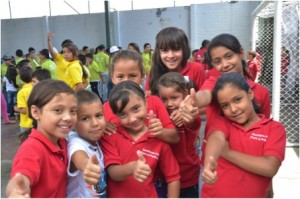
Red Metropolitana, Colombia
The Metropolitan Network for Risk Management, based in the Colombian city of Medellin, was created in 2012 to help coordinate policies and actions on the analysis and reduction of risks, as well as to prepare and execute response and recovery in the event of disasters and emergencies. The city is the hub of the Aburra Valley, one of the most populous parts of the Colombian Andes, a region which is vulnerable to floods, landslides and volcanic activities. Over 50,000 families live high-risk areas of the valley, and a lack of resettlement options means that the community has had to learn to be resilient.
The goal of the network is to improve the quality of life of the inhabitants of the Aburra Valley metropolitan area and to promote preventive scenarios, in an effort to head off loss of life and impacts on the economy. A key aspect of the network is is monitoring, with the goal being to reduce the level of uncertainty about the risk of critical events and enable the scientific community to dialogue with the public. Thanks to the SIATA project – the Medellin and Aburra Valley Early Warning System – the local authorities work with private companies to supply real-time information over social networks, mobile apps and CLIMA 24/7, a coordinated broadcasting systems run in partnership with the local channel Telemedellin. Mindful that information is of little value if the community is not prepared to raise alerts and activate its neighborhood and community contingency plans, the network has created the CUIDA groups, which involve adults and children in constructing a preventive culture. Participants identify the environmental conditions of their area and propose actions for protection, prevention, recovery and the monitoring of critical situations. That helps bolster community resilience and a spirit of volunteerism, as well as providing the community with the necessary tools to understand, interpret and communicate information from SIATA. Depending on their skills, CUIDA group members are available to support local entities such as the rescue services. They carry out promotion and prevention activities, work with the broader community, construct risk maps, clean and protect river basins and replant trees around springs and in areas of ecological importance. From a young age, children are taught to understand the alerts and make use of the technological tools required. Given the ease with which they adapt to technology, they are a conduit of information to their parents. In addition, most of the meteorological and rain gauge stations have been set up educational facilities where risk management education processes are held with students, with the aim of making new generations aware of their role in risk management. Because the risk network is so comprehensive, local authorities, response agencies and the community have learned to deal with the most critical situations and there has been a marked decrease in emergencies thanks to preventive actions.
Links:
- Candidate presentation (Spanish) [PDF 715.57 KB]
- Candidate information (Spanish) [PDF 376.46 KB]
Share:
Tweet #Sasakawa2015
Notice: This is an official conference website. Any inappropriate content will be removed.



